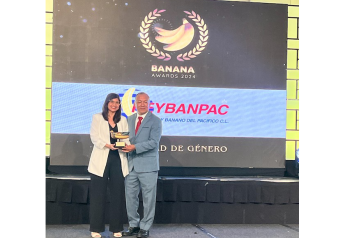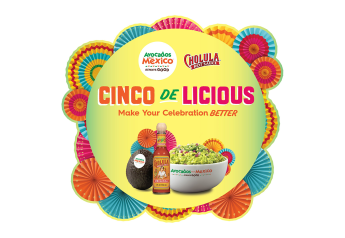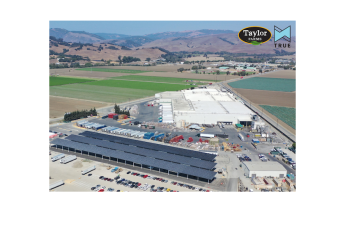Q&A with Andy Higgins, CEO of International Fruit Genetics

The Packer’s Tom Karst interviewed Andy Higgins, CEO of Bakersfield, Calif.-based IFG, in February about trends in grape variety breeding and new introductions from the company in recent years.
Higgins said that proprietary fruit breeders such as IFG, Sun World and others are increasingly important in new variety introduction.
“The levels of investment that are required to create a new variety are going to be increasing over time,” he said. “There are so many technologies that we can apply to our work. Something that used to take 20 years, we could probably do it in 10 years because of good molecular techniques. However, all of those techniques take time, resources and money, which the private programs are in a better position to fund and develop them (compared to) public programs.”

In regards to the scope of operations, how would you describe your company right now?
Higgins: We're a fruit-breeding company. In 2021, we celebrated our 20th anniversary. In fruit-breeding years, that's actually a youngster, just because of the long cycle times of variety development. When we look across the marketplace, we're one of the few companies that have been consistently breeding for that period of time and making introductions regularly over the 20-year period. We focus on table grapes and sweet cherries. We do have some breeding in other related categories. For example, we have a program to breed new varieties of grapes (specifically for raisins, not table grapes) that is designed to enhance and improve the raisin grape varieties, as well.
Those are the big crop categories that we work with. From a historical perspective, a lot of the plant breeding around the world has been done over the years by public institutions, universities, government or quasi-public, private kind of programs. The USDA and state breeding programs are a good example of that. They've done excellent work over many years.
But what we're finding in the last 20 to 25 years is that the level of investment and the pace of investment that's required to keep up with expectations of growers and marketers has not kept pace. It was one of the reasons why IFG was created, that the needs of the marketplace were far outstripping the ability for public programs to really satisfy what was happening in the world, and that's not just in the U.S., it was a global challenge.
Those [public] programs still exist; so, they are still churning out varieties and still doing what they do, so there is no negative aspect there.
But just the advancements of technologies and resources that plant breeders have today compared to what they had 30 years is just astonishing. So, you know, an example of that would be the cost of doing DNA work. Today it costs approximately $100 to sequence an entire genome, where 20 years ago, that would have been millions of dollars, if not impossible. So all of a sudden, there are tools that we have to make connections to say, let's explore this and try and figure out different ways to approach different problems whether they are grower problems or marketing opportunities to further enhance the variety. When IFG was formed, the other aspect that was important, that really differentiates us from anyone else really, is that we're focused on the consumer first.
A lot of the breeding (in the past) has been focused on what growers need, what the shipping and postharvest needs are for varieties, and not really paying attention to consumers. The classic joke of the 90s was that (a variety) would look beautiful but taste like nothing.
That's all solvable in plant breeding. We’ve taken that challenge on was sweet cherries as well, and really focused on the consumer. Understanding, if we produce a really good variety, it has to work with the grower, the marketer and everyone in between as well; it has to tic all of the boxes. A lot of what we do is just that. We create crosses every year, we evaluate seedlings every year, and more than just a few of those seedlings each year then progress into our advanced testing and eventually would make it to potential release.
What is IFG’s revenue?
Higgins: We don’t disclose that. The data point I can share is, globally, we’ve got about 33,000 hectares under license. We are licensed in 15 countries globally today.
Did you grow up in the fruit industry? What was your was your background?
Higgins: I’m an agronomist/horticulturalist by training. My specific background is as CEO in breeding companies themselves, and I've always been on the genetic development side of the business, not necessarily in the production or the marketing side. I have been with IFG for the past five and a half years.
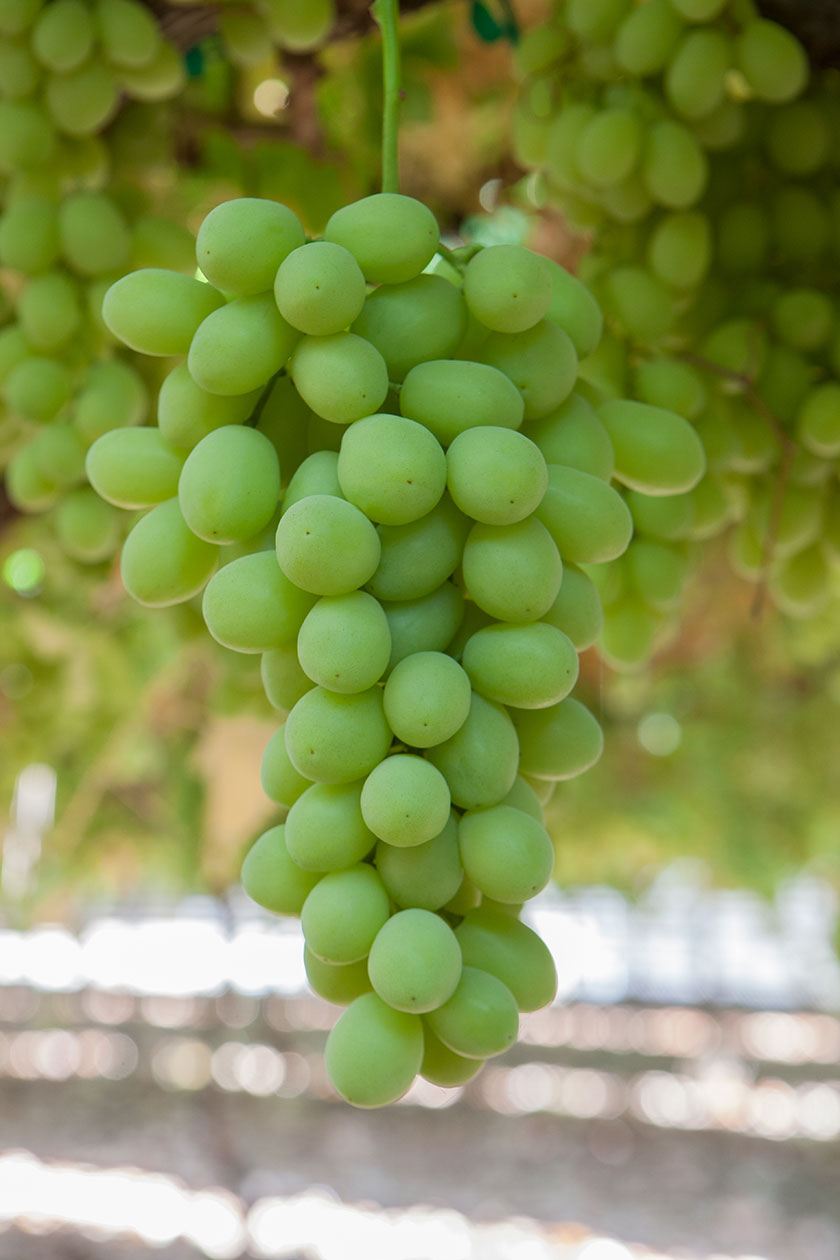
Sweet Globe grape variety
You've had some success stories with your varieties. How do you measure or evaluate varieties? How close can you get to knowing whether a variety will really click and catch on?
Higgins: That's a good question. There is a combination of art and science. We are not always, right, certainly, and that’s the reason for doing extensive testing and trialing, as well as using consumer panels. We've done consumer panels in Europe, the U.S. and this past year, in China, to find what consumers are looking for in grapes. Are they looking for higher acidity, sweetness, do they have preferences on the flavor components that are out there today, whether that's Muscat, or whether that's fruit flavors, the toffee or cotton candy flavors?
We are trying to understand what consumers really want and then that helps us in our selections process. Our largest and most successful is a variety called Sweet Globe It's a green grape and it's actually not (highly) flavored, but it tics so many other boxes for the grower and the consumer. It's widely adaptable to different regions and it fits a lot of the markets that we consider our core quadrant. We divide our varieties into two main categories: core and specialty. Core makes up about 80% of ultimately what we license, and specialty makes up about 20%. Sweet Globe grapes are certainly in that core category.
A lot of our consumer work has shown that more than half the consumers are looking for a grape that tastes like a grape, that just has a really good eating experience, and that is what the Sweet Globe variety provides. It has a thin skin, it has a really crisp, crunchy texture, is juicy, and has a good balance between sugar and acidity. It is just an extremely pleasant eating experience, even though it doesn't have a unique flavor. It is really setting a standard today for the category of green grapes.
How do you define a core variety? It would be more of a variety with not necessarily a premium vibe to it, correct? Does a “core” variety work just as well grower returns compared with a “premium” variety?
Higgins: If you compare Sweet Globe, for example, to autumn king, a long-time, California variety that is one of the largest, most successfully grown varieties in California for a long time in this green seedless category, it's just such an incredibly different eating experience and better experience for the Sweet Globe grape. As a result, there are grower price premiums being paid for it just because consumers want it. It is successful and for the grower, it is grower friendly and it has good yields. It's adaptable across a wide range of climates and ships well.
So, you can grow that variety most anywhere, in California, South America, Asia or what have you?
Higgins: Exactly. It is an example of one that, even though (we) may be known as the Cotton Candy company or the high flavor company, it's actually one of our workhorses that's done extremely well.
When you work on variety improvement, where do you find the DNA to work with? What does that process look like?
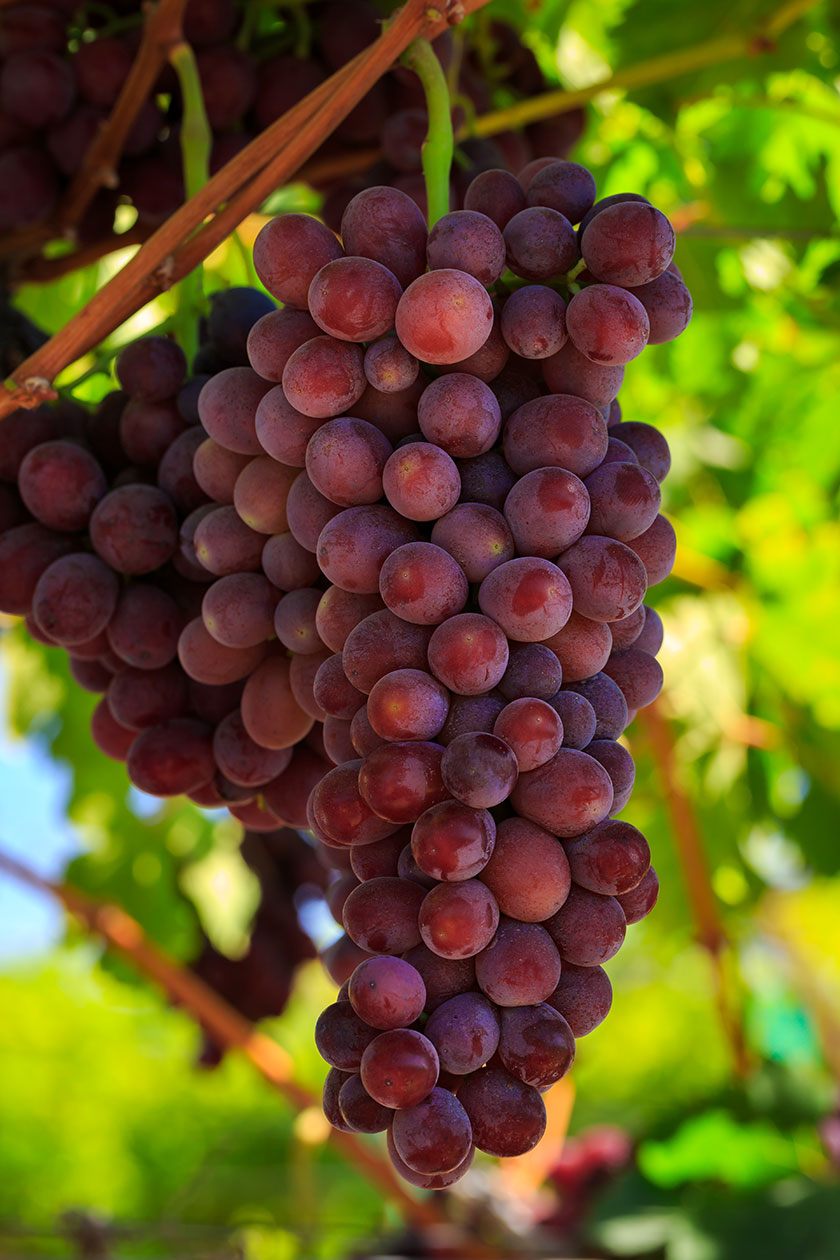
Torch grape variety
Higgins: That’s a great question. You have to have a starting point. The gene pool becomes really important, so we maintain a very wide and diverse gene pool. It is a collection essentially of over many years of publicly available varieties that we've incorporated. In addition, we have a long-time relationship with the University of Arkansas, which had a great table breeding program for many years. We do have a licensed relationship with the university and do development work using some of their varieties as well, which has actually one of the things that has helped IFG’s success. We have been crossing North American table grapes with European table grapes and we are bringing the best of both species forward. A lot of the original table grape work was done only with European species, so Vitus vinifera, your classic wine grape is where most of the table grapes today came from.
Vitus vinifera species is your classic Cabernet Sauvignon Vitus vinifera. That’s where a lot of the original grapes have come from, because seedless grapes have only been a recent phenomenon in the last 40 to 50 years, with the exception of thompson seedless. It’s only in recent years in plant breeding that this idea of a seedless table grape has come forward where, certainly in my grandparents’ generation, grapes were seeded and had thick skins. I was talking last week to a person, who was talking about their grandmother who still peels grapes to this day. Grapes had thick skins and big seeds, so you had to try to find the pulp in the middle and that's what you ate. It has come a long way since then. What we've done is taking these table grapes that were originally wine grapes and bred them with a North American species. Vitus labrusca is an example of that, and some people would know that as the concord. Concord grape juice comes from an American grape, and the actual concord grape has a really thick chewy skin that gets stuck in your throat, with this pulpy kind of mushy center, that is not crisp at all. But it makes great grape juice, and that flavor of concord grapes is unique to North American grapes.
Using that example, we've been crossing this concord grape with some of the European grapes trying to bring forth the best of both worlds. An example of this is our recent introduction called Torch. It's an early red core table grape variety that is designed to be the earliest of our red offerings. Today, most of the early reds are from a variety called flame seedless that has been around since 1974. Flames have a lot of grower challenges; yields are inconsistent, it doesn't store well and sometimes has trouble coloring. Torch, we believe, is a substantial improvement over flames. We believe that it will be one of the good options for growers in California to replace a lot of that flame acreage early in the season, with a beginning of July harvest window for California. We're excited about that new introduction.
The cool thing about it is it also has nice flavor. Torch is also very pleasant to eat where flame didn't taste like much. On a bad day, flames would taste more like cardboard. It was never a great grape to open the season with because, it’s red, but doesn't taste very good.
You can sell it as locally grown and coming from California, but you are not leading with your best foot forward. So, we're excited about the Torch variety. There'll be some fruit in the market and certainly planting a lot of Torch acreage in California as that variety ramps up substantially in the next two years.
As you talk about improving older varieties, how do you present them to the marketplace? Do you talk to both the growers and the retailers?
Higgins: That's a great question. Short answer is that we do we need to talk to everybody in the entire channel. The longer answer is that we don't want to get too far out ahead of ourselves, for example, such as getting a retailer excited about something that they're not going to see for five years, because it takes a while to develop in your market.
We're always trying to sequence things. We'll be talking to growers about varieties or potential varieties that are just now being introduced, trying to see how their test plots are performing and how their test markets are going. Then from that, we would make a decision on if we would introduce something, and then get some initial commercial volumes in the marketplace. This is where we are with this early red table grape variety Torch.
It is a partnership. We do bring retailers to our fields and we like to do a lot of listening, trying to understand how they view the category, what their expectations of the category are, and some of the changes and goals individually or just as in the industry in general. From there we will try to hone in. An example of that is looking at how table grapes compete within the produce department.
The berry category is certainly a competitor, meaning it's a snackable food; it's a lunch box food. You don't have to cut it or process it to eat it, so it's easy for food. We are working to understand what the retailer wants. Retailers have asked if there is a way to increase health benefits in the category of table grapes. Blueberries in particular have done a good job in promoting antioxidants. Yet, the black and red table grapes oftentimes have more antioxidants than blueberries.
We see this as an opportunity to further develop this message, and communicate it to be able to promote with retailers. That's kind of an example of something that we that we will always be listening for the marketplace.
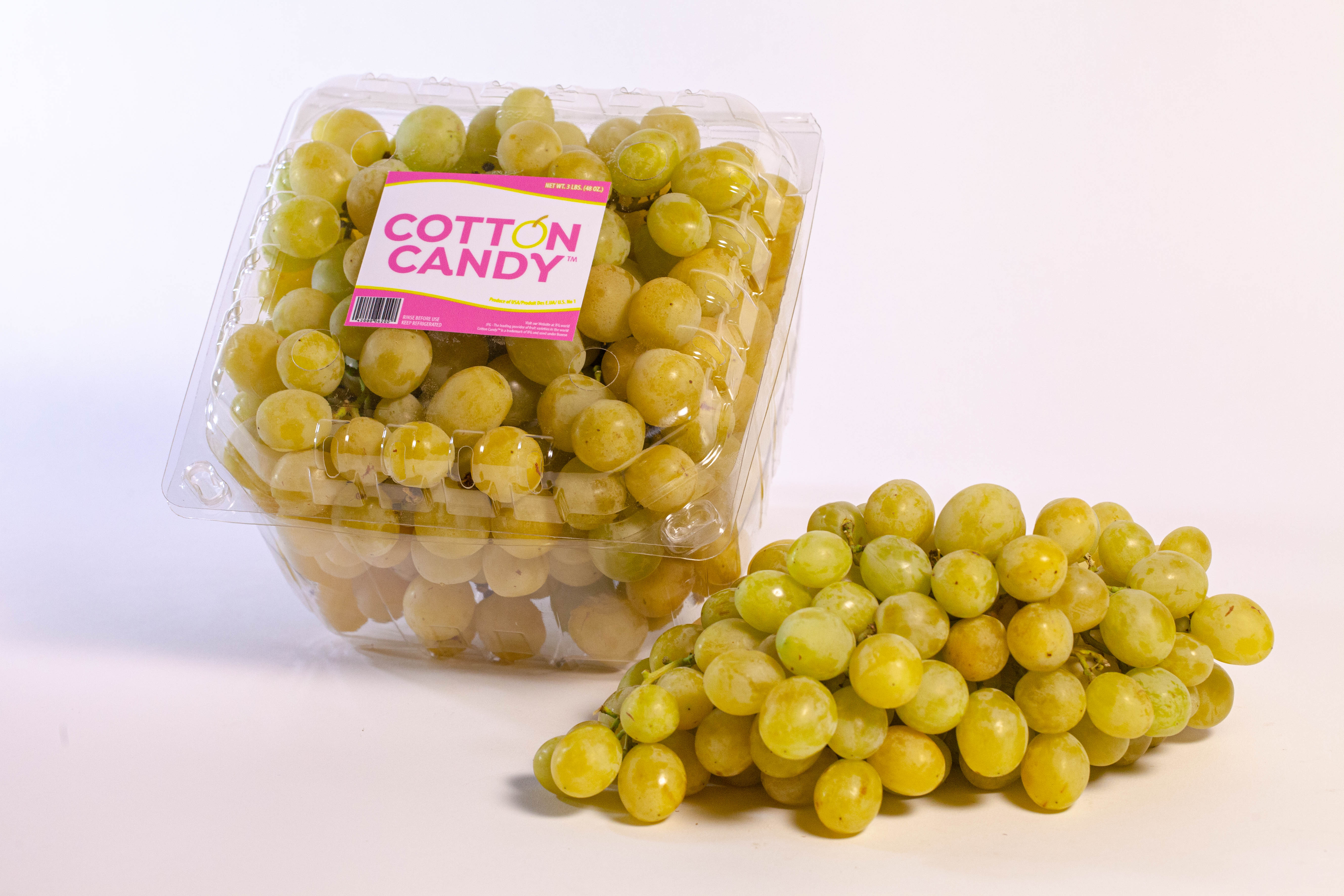
Cotton Candy grape variety
When you look at the future, the growers that are growing grapes, do you think there'll be more oriented to working with a company like yours or Sun World by growing these licensed varieties rather than growing public varieties that have been developed by the universities or USDA?
Higgins: Yes, we are definitely seeing that already. In recent reports on acreage in production, of the top 10 table grapes in production in California, four or five of those varieties are proprietary.
I think there are a lot of reasons for that change. The USDA really has not introduced table grapes that have had broad success in recent years. I say that not as a criticism, but just kind of a statement of fact. I think that a lot of the work that they're doing is really good work. but it's very singularly focused, like, for example, on mildew or disease-resistant, which is a really important factor and one that takes a long time to achieve. I'm expecting good things coming in the future from their programs, but that doesn't satisfy the need to plant today and the needs of today's growers. I think there's always going to be this desire by growers to look broadly at what other options there are, and proprietary programs from Sun World, IFG or others are a good solution.
I think that we'll see a further focus on plant breeding companies. The levels of investment that are required to create a new variety are going to be increasing over time. As we look at as mentioned, the DNA profiling, there are so many technologies that we can apply to our work. Something that used to take 20 years, we could probably do it in 10 years because of good molecular techniques. However, all of those techniques take time, resources, and money, which the private programs are in a better position to fund and develop them (compared to) public programs.
When you sell or grow fruit in China or another country, are you ever concerned that this work that we've done on this variety may be stolen? How do you account for that risk?
Higgins: It's a huge part of what we do today. I'd say 40% of my personal time the CEO is spent on protection and infringement; it is just a necessary part of our world. You read in the paper about fake golf clubs, or shoes, or Gucci purses. I think any company that has something that's unique, and proprietary, someone else in the world is going to want to steal it or copy it. We have an entire team globally that's looking for infringement and actively pursuing cases of that. We do register varieties in all the countries that we license, and we do trademark globally in 67 countries. We were very active in that world. I don't think it'll ever be something that's solved or done or behind us, meaning we're the number one in the world in what we do and because of that people are always looking to take advantage of something that was great. So, it's a huge part of what we do.
You don't want them to steal the actual grape vines and you don’t want them to steal the image or the brand, so you have to protect both, yes?
Higgins: We have people in the wholesale markets globally doing DNA testing every week. We're trying to track down what we think might be growers that are producing illegally. Several of our cases in the last six months have been about someone putting our Sweet Globe name on a variety that is not Sweet Globe. The consumer is being lied to at the end of the day. There's also a fairly large situation we have in Europe with a major retailer where there was a supplier into that major retailer who was taking rejected fruit, repackaging it, and putting one of our trademarks on it.
Not only were they taking rejected fruit and delivering it to retail, but they’re putting our trademark on it. The retailer was being deceived, and consumers were being deceived in the process. a lot of our work is about education and the promotion of traceability along with the promotion of assurances to consumers that what they're buying is really what they're getting.
Thanks for your time. Anything else that you would like to highlight?
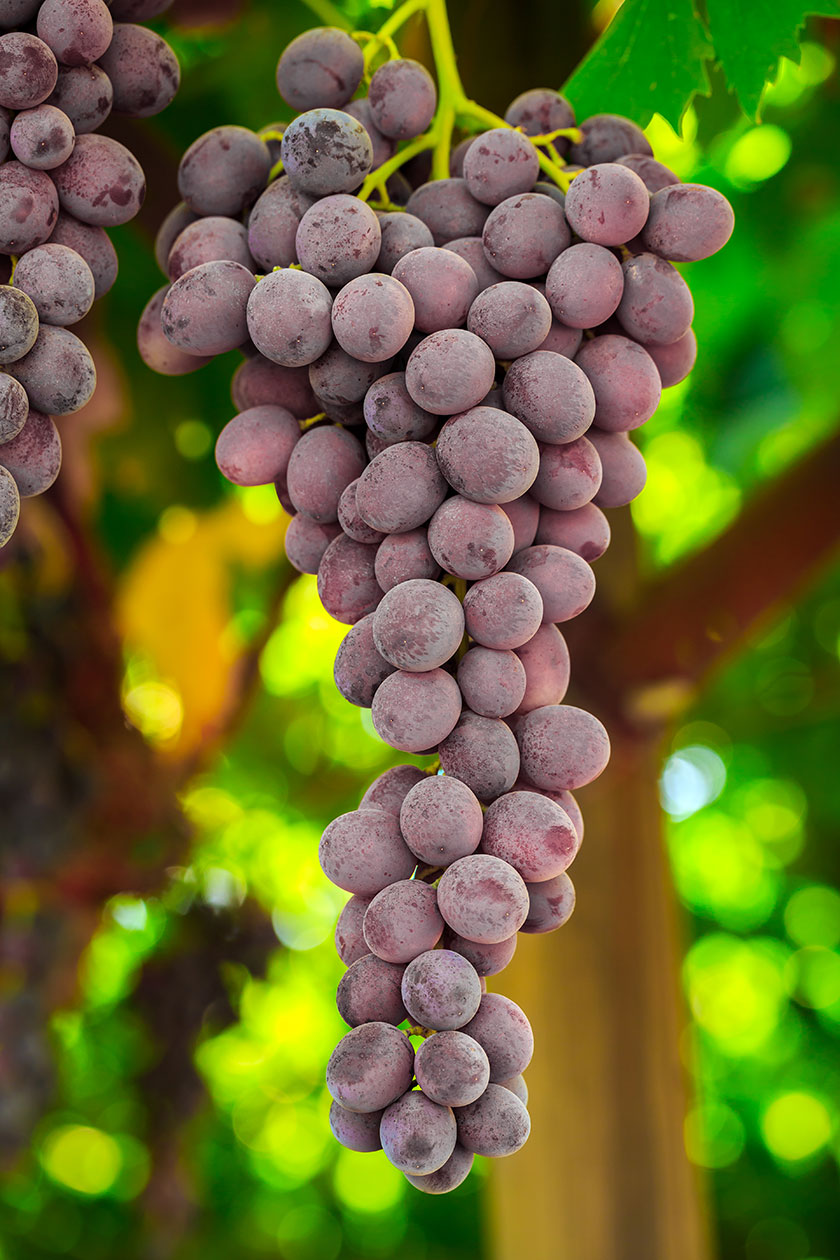
Bebop grape variety
Higgins: Another variety I was going to mention is a variety we are introducing called Bebop™. It is one that we're really excited about because in all of our testing, we have found trialing works both for the grower, and its score is extremely highly with consumers. We do these consumer panels, and it has consistently performed above almost anything else we've ever tested, actually. It's extremely high scoring.
Bebop is mildly fruity, so it's not a really strong flavor, but you can just eat it all day long. It's got a good balance of sugar and acidity, and has a good mouthfeel. It's also highly productive and easier for the grower to deal with as well, so we're excited about that as a new introduction. There's some pretty good acreage going into California now. There will be some fruit in the stores this summer, but we will be seeing more volumes (later).


